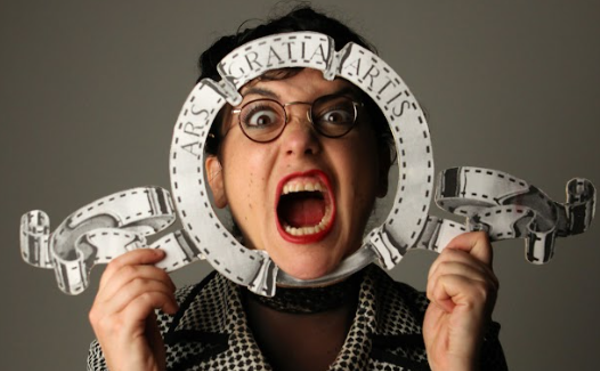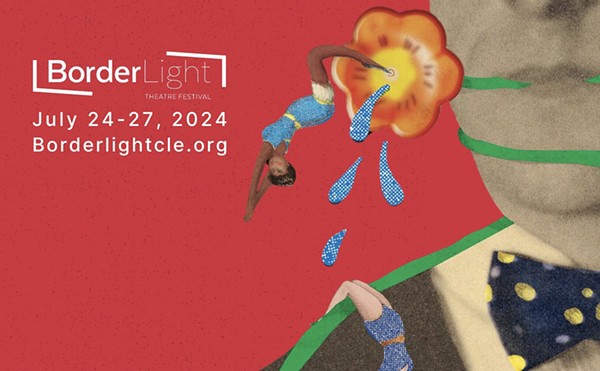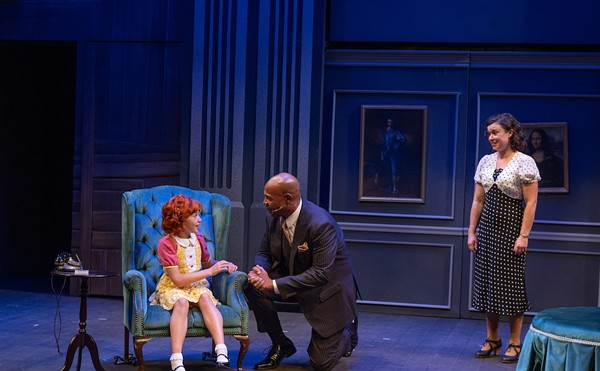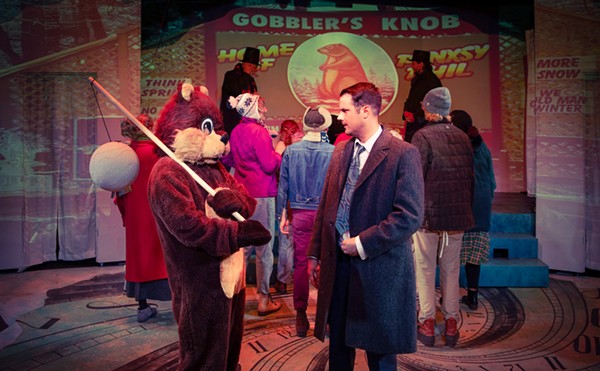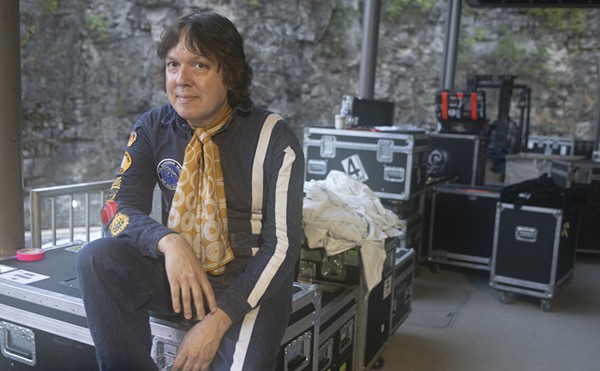In a conversation transcribed online at irhine.com (a nonprofit Cincinnati community website), the late Tarrence Corbin talks about obsessively setting up still-life compositions for his students at the University of Cincinnati. Comparing these to his tightly packed, often large-scale acrylic-on-canvas paintings, he says, "These are literally like my vision of things in a toy box."
The description is apt. Corbin's brightly colored, tumbling expanses of semi-abstract, geometric forms evoke the intense, candy-hard surface of childhood recollections, stuck tightly together beneath a glaze of more adult experience. Corbin, who died of lung cancer this past December, often talked about parallels between his own rhythmic visual transitions and the ultra-sophisticated sound of mid-century free-jazz composers, especially John Coltrane's cyclical chord changes. Coltrane's "sheets of sound" envelop the ear in a shimmering skein of notes, and Corbin's toy-box paintings do something similar as they flow across the expanse of his horizontal supports, ringing changes on a tightly observed range of pastel and primary colors.
"Kennywood Park," the artist's room-length 2005 triptych on display in the solo show A Life in Color at Tregoning & Company Gallery, is named for the Pittsburgh amusement park not far from the Corbin's birthplace in southwestern Pennsylvania. Progressing from left to right, each of the work's eight-by-six-and-a-half foot sections is painted in increasingly more saturated shades of yellow, red, blue, and intermediate tones of orange and green. It looks like it might have been commissioned by Willy Wonka, inviting the eyes to chow down on a confectioner's version of solid geometry. Hollow cylinders reminiscent of rolled wrapping paper alternate with striped spheres, bumping gently against cubes and other, harder-to-define things — frame-shaped ovals, unfurling banners, tasty lozenges and semi-opaque flat circles. Viewers are invited to a kids' birthday party, with streamers and unopened presents, game boards and furled noisemakers.
It all seems as unambiguously delicious as a big bag of movie candy, carefree as a rousing session of Snakes and Ladders. Yet, like that game, which is fraught with the anxious giddiness of sudden, banana-peel slippage, there's a more earnest, even perilous, aspect to Corbin's work, and a real seriousness to his aesthetic project. Influenced by the 1960s concrete expressionism of New York painters like Al Held and Knox Martin, Corbin's constantly moving compositions are all about expressive balance, and therefore concerned with falling and the failure of appetite.
This is especially obvious when he abandons his usual sweet-and-sour palette, as in the nearly 20-foot, two-panel "Ebony Sonata." Executed entirely in a Guernica-like grisaille, the masterful tonal study is full of sharp angles and turbulently sweeping curves — an overwhelming vision of elbowing crowds and engulfing waves. It's suddenly clear that the unceasing fields of pleasure offered in his other paintings are just as dangerous, or endangered, affording only shifting interstices and crevasses as resting places for the tired and satiated eye.



